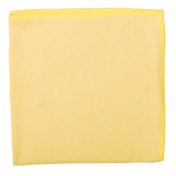For some time now, face masks have been an everyday companion and it is hard to imagine everyday life without them. As the pandemic has progressed, the regulations have changed regularly, including the rules on compulsory wearing masks. At the beginning, there were no precise specifications as to which type of mask should be worn. This meant that it was also possible to use self-sewn fabric masks. Later, the rule came into force that only certified medical masks or respiratory masks may be used. This blog post explains the differences, advantages and disadvantages in more detail.
How effectively do everyday or community masks protect against corona?
The self-sewn masks or fabric masks that were permitted at the beginning of the pandemic are mostly made of cotton fabric and are not certified. They offer little protection against droplet infection by only reducing droplets and splashes when speaking, coughing or sneezing. This means that the path of infection can still be somewhat interrupted. Unfortunately, the pleasant feeling of wearing them is accompanied by some disadvantages, because the so-called everyday masks do not seal the face properly and therefore have only a limited barrier effect. The effectiveness of these masks is also not tested. The protection against infection is not particularly high, which is why the regulation stipulates that they are no longer permitted in shops/establishments with customer traffic and local public transport.
What properties do surgical masks have?
Medical masks or surgical masks are tested according to the EN 1468 standard and are therefore a certified medical product. They protect others from the drops of the person exhaling. In addition, droplets and splashes are reduced when speaking. These masks are used in the medical and care sector and, according to the regulation, can also be used in shops/facilities and on public transport. Although they have a limited barrier effect against mutual infection, they still protect the wearer and the person opposite them. The disposable product also does not seal the entire face. It is important to wear it correctly in order to obtain and guarantee maximum protection.
How much protection does an FFP2 mask provide?
A respiratory mask or FFP2/FFP3 mask guarantees the wearer protection against inhaling the smallest airborne particles, droplets and aerosols. The certified mask is used when working with inhalable hazardous or biological substances or now also in everyday life as protection against the virus. In some federal states, FFP2 masks are even mandatory in retail and public transport. FFP2 masks are tested and certified according to the EN 149 standard. Furthermore, the FFP2 mask filters the viruses out of the air we breathe when used correctly. It is therefore important to read the instructions for use carefully in order to achieve maximum protection. It is also good to know that a beard/full beard can reduce the protective effect.
Conclusion on the masks
In summary, it can now be said that the FFP2 mask offers the highest level of protection against the virus. Provided it is used correctly. Neither the mouth-nose cover nor the medical face mask seal the face properly, but they do offer a limited barrier effect and can also interrupt the infection route. With the appropriate distance, the risk of infection is also reduced.



